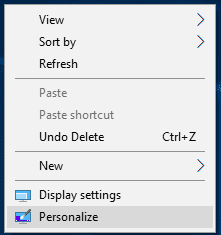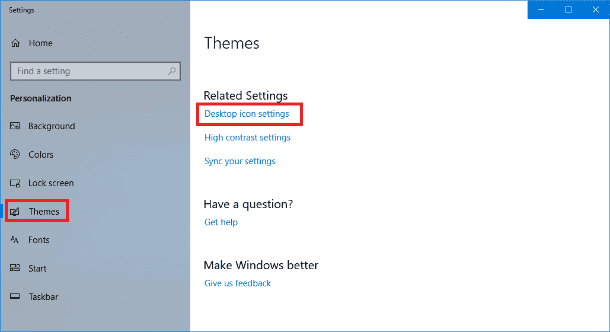Read this article to find out how to restore deleted files from the Recycle Bin, and how to recover them after you emptied the Recycle Bin, or deleted the files without sending them to the Bin, and what tools can help you.
How can I get the files back from the Windows Recycle Bin? I accidentally deleted some files and want to bring them back, what should I do? Can I recover my files deleted permanently? Quite often, users delete their files by mistake and wonder how to restore them from the Windows Recycle Bin, and what to do if the files are no longer there. In this article, we will try to answer such questions and offer possible ways to recover deleted data.
What is the Recycle Bin in Windows?
To understand the possible ways of restoring files from the Windows Recycle Bin or after it is emptied, we should first have a look at the notion of such Recycle Bin.
As an operating system tool, the Windows Recycle Bin is an element of the graphical interface that represents a system-allocated area of the disk space reserved by the operating system to delete and temporarily store deleted user data before such data is permanently erased. It can have various internal settings to manage the reserved space and the ways of storing data.
In all versions of this operating system, the Windows Recycle Bin is located in the main root directory and is a hidden system folder which prevent access by inexperienced users and saves them from actions that could bring undesired consequences.
After files are deleted, they are moved to the area occupied by the Windows Recycle Bin and are kept there until certain conditions are met. Also, deleted files can be restored or erased completely depending on the properties configuration.
The Windows Recycle Bin offers a safe temporary storage for all deleted files and folders. When you delete an element from the hard disk of a desktop or laptop computer, the Windows operating system places it into the Recycle Bin and its icon type changes from empty to full.
If you have several hard disks, partitions, or an external hard disk connected to your computer, each of them will have its own bin, $ Recycle.Bin, and settings. Removable disks such as USB drives and memory cards do not have Windows Recycle Bin. That’s why files deleted from removable data storage devices are deleted permanently at once.
The Windows Recycle Bin will store the deleted files until the disk space occupied by them reaches the maximal limit set for the Windows Recycle Bin. When it happens, the Windows Recycle Bin will automatically remove the old (previously deleted) files from there to free some space for new files deleted only recently.
If you use keeping all your deleted files in the Windows Recycle Bin as a protective measure, you can increase the maximal size of the disk space reserved for its needs, and set your own limit to how much disk space the Recycle Bin is allowed to take.
We will go into detail of the Windows Recycle Bin settings in the next part of this article.
How to Configure the Recycle Bin?
Configuring internal option of the Windows Recycle Bin is quite easy and doesn’t take much time. It is mostly reduced to configuring the two options: setting the maximal size of the disk space allocated to manage deleted files, and dealing with the instant delete option.
Usually the Windows Recycle Bin has a desktop shortcut created when the operating system was installed. To access the settings window, click on the Windows Recycle Bin shortcut and open the context menu. From the list of possible actions, select Properties.
If there is no shortcut for the Windows Recycle Bin on the desktop (you might have changed settings when installing the operating system), then follow this sequence of actions to have the shortcut displayed again. It can be done in several ways. For example, right-click on an empty area on the desktop and open a context menu, then select Personalize from the list.
Settings, the main app for all options of the operating system will open in the Personalization page. In the left panel, go to the Themes section, and in the right panel, use the scroll bar to go down the page and find the section Related settings. Now click on the text link Desktop icon settings.
The corresponding settings window will open; in the section Desktop Icons check the box next to Recycle Bin to make the Windows Recycle Bin icon be displayed on the desktop. Then click Apply and OK to save the changes you have made.
In the window Recycle Bin Properties choose the location of the Windows Recycle Bin (for example, Local Disk С:) for which you want to change the maximal size.
In the section Settings for selected location check the option next to the cell Custom size: Maximum size (MB): In the corresponding cell, enter the value for the amount of disk space (1024 MB = 1 GB) you would like to allocate for the needs of the Recycle Bin. Then click Apply and OK to save the changes you have made to the size of the Windows Recycle Bin.
Note: Usually the maximal default size of the storage space for the Windows Recycle Bin should be about 5 percent of the disk free space.
You can change the maximal size for the Windows Recycle Bin for all local disks shown in the properties window. Select the necessary disk and repeat the procedure to change the storage space size.
If for some reason you are not going to set the final size for the Windows Recycle Bin or you want to disable it (for example, you lack free disk space to keep user files), you can enable the function of deleting files permanently.
To do it, in the window Recycle Bin Properties in the section Settings for selected location and check the option Don’t move files to the Recycle Bin. Remove files immediately when deleted. Then click Apply and ОК for the changes to take effect.
Now all files and folders you delete will miss the reserved storage space of the Windows Recycle Bin and will be erased immediately.
It means that recovering them with integrated functions of the Recycle Bin (this is what we’ll be talking about in a moment) is no longer possible.
Different Ways to Delete Files and the Recycle Bin
In the Windows operating system, there are two ways to delete files: ordinary and permanent.
In the first case, a user deletes files using the Delete button on the keyboard, or from the Windows File Explorer using the context menu. If the Windows Recycle Bin is configured to store deleted files and has a certain reserved size, then all files are moved to the Bin after they are deleted. That is why the user can always rely on integrated functions of the Windows Recycle Bin if some files were deleted by mistake or if the user decides to restore them.
In the second case, when the user deletes files in another way (for example, with the key shortcut Shift + Delete or if the option to destroy files immediately after deleting is enabled in the Windows Recycle Bin properties etc), such files are erased at once. They will not be displayed in the Windows Recycle Bin and restoring them will make you use special third-party software.
You can read more about the two ways of deleting files (ordinary and permanent) in our previous article: «Files sent to The Recycle Bin: How to View, Restore or Delete Them Permanently».
Three Methods to Recover Deleted Files from the Recycle Bin
YouTube:
As we have already said in our article, various methods can be used to restore files depending on how they were deleted. We will focus on the three main ways to restore deleted files that you can use as you think fit.
- Restoring deleted files from the Windows Recycle Bin to their original location.
- Recovering deleted files with freeware.
- Recovering files deleted permanently from the Windows Recycle Bin with the powerful software tool, Hetman Partition Recovery.
Below, we will describe each method and point out the possible reasons to influence your choice in every case.
Restoring Deleted Files from the Recycle Bin to Their Original Location.
This method to restore deleted files is good if the user prefers ordinary deletion of files and folders, and the fixed size option is enabled for the Windows Recycle Bin.
Open the Windows Recycle Bin by double-clicking on its desktop icon. Otherwise, right-click on it and open a context menu. From the list of possible actions, select Open.












Top comments (1)
Where are the windows 11 screenshots? :insert the crying emoji here: